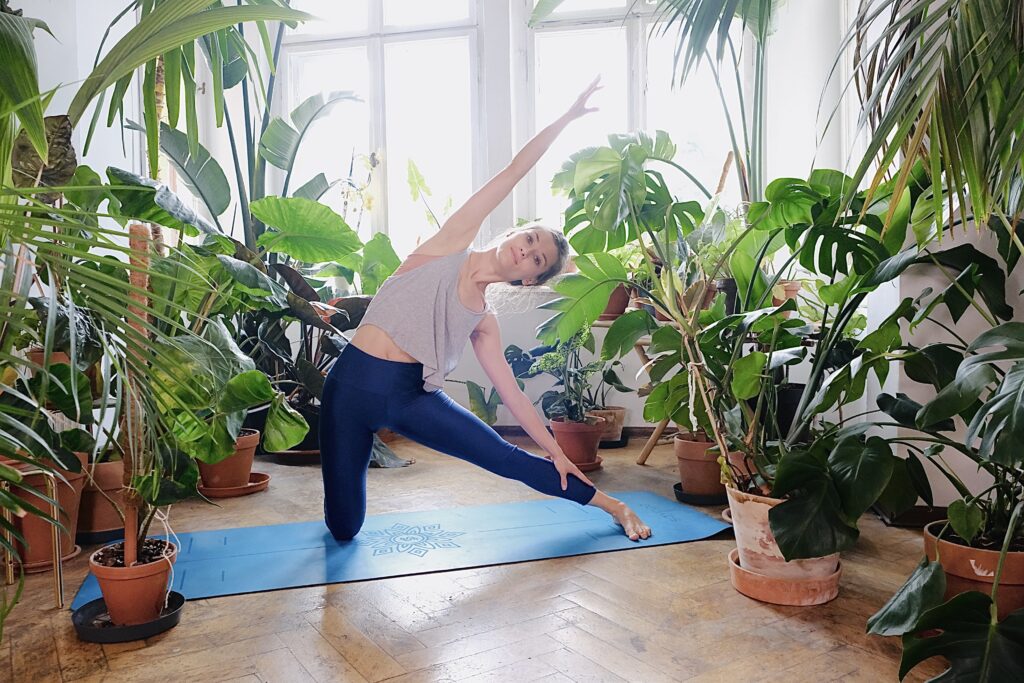
Learn Yoga Terms with me: The Comprehensive Yoga Dictionary for Beginners
Starting your Yoga journey is a transformative proces. Nevertheless, hearing all those Sanskrit words might be pretty overwhelming. Therefore, I want to invite you for my Comprehensive Yoga Dictionary, that will unlock the most used yoga terms, cultivating a deeper connection with your practice. Embrace the language, to embody the journey within.
UNDERSTANDING YOGA TERMS
Understanding words used by you Yoga Teacher is more than just a linguistic exercise – it’s a key to unlocking the full potential of your yoga experience. This dictionary serves as a reliable companion, providing clear definitions and explanations for the most commonly used yoga terms. From foundational concepts like “asana” and “pranayama” to the subtleties of “drishti” and “bandhas,” each entry is crafted with the beginner in mind.
WHY IS IT IMPORTANT TO UNDERSTAND YOGA WORDS?
The language of yoga is not just a set of arbitrary terms; it encapsulates the essence of a holistic and ancient practice. Knowing these words empowers you to communicate effectively with instructors, fellow practitioners, and delve deeper into the philosophy and principles that underpin yoga.
This dictionary is not merely a glossary; it’s a tool to enrich your practice. As you become acquainted with terms like “savasana,” “namaste,” and “chakras,” you’ll find a deeper connection between your mind, body, and spirit. Discover the significance of “om” and explore the nuances of various “asanas” with confidence.
MY COMPREHENSIVE YOGA DICTIONARY:
Alignment: The correct positioning of the body in yoga poses to ensure safety and effectiveness.
Asana: Yoga postures or poses designed to promote physical health and mental well-being.
Bandhas: Energy locks or muscular contractions used to redirect and control the flow of prana in the body.
Chakras: Energy centers in the body believed to influence physical, mental, and spiritual well-being.
Chatturanga: Lowered Plank pose with you elbows bend in 90 degrees and you body parallel to the floor.
Downward Facing Dog: In Sanskrit Adho Much Svanasana, one of the most common asanas with you palms and feet on the mat and you pelvis lifted up.
Drishti: A focal point or gazing technique employed during yoga poses to enhance concentration and balance.
Hatha Yoga: A branch of yoga that emphasizes physical postures, breathing techniques, and meditation.
Mantra: A repetitive word, sound, or phrase used in meditation to aid concentration and focus.
Mat/Yoga Mat: A cushioned, non-slip mat used for practicing yoga postures.
Mudra: Hand gestures or positions often used in meditation and breathing exercises.
Namaste: A traditional greeting or gesture expressing respect and acknowledgment, often said at the end of a yoga session. It translates to “the divine in me honors the divine in you.”
Nidra/Yoga Nidra: A guided relaxation and meditation practice that induces deep relaxation and rejuvenation.

Om/Aum: A sacred sound and spiritual icon representing the essence of the universe and used in meditation.
Prana: Life force or vital energy that permeates the body; controlled through breath in yoga practices.
Pranayama: Breathing exercises aimed at controlling and regulating the breath to enhance vitality.
Props: Tools such as blocks, straps, bolsters, and blankets used to assist and enhance yoga practice.
Savasana: Corpse pose, usually practiced at the end of a yoga session for relaxation and integration.
Sutra/Yoga Sutra: A foundational text that provides guidance and philosophy for the practice of yoga, written by the sage Patanjali.
Straight Spine: Stretched spine that keeps all natural spine curves.
Tadasana: Mountain pose, standing straight posture with your spine stretched toward the sky.
Tadasana Line: Straight line from your leg/ legs to the top of your head (crown) with your spine straight.
Ujjayi Breath: A type of controlled breathing where one breathes in and out through the nose while constricting the back of the throat, creating an oceanic or whispering sound.
Vinyasa: A flowing sequence of yoga poses coordinated with the breath.
Yogi/Yogini: A practitioner of yoga; ‘yogi’ is used for male practitioners, and ‘yogini’ for female practitioners.
SUMMARY
Remember, this is a basic introduction to some common yoga terms. As you continue your practice, you’ll encounter more specialized and advanced terminology.